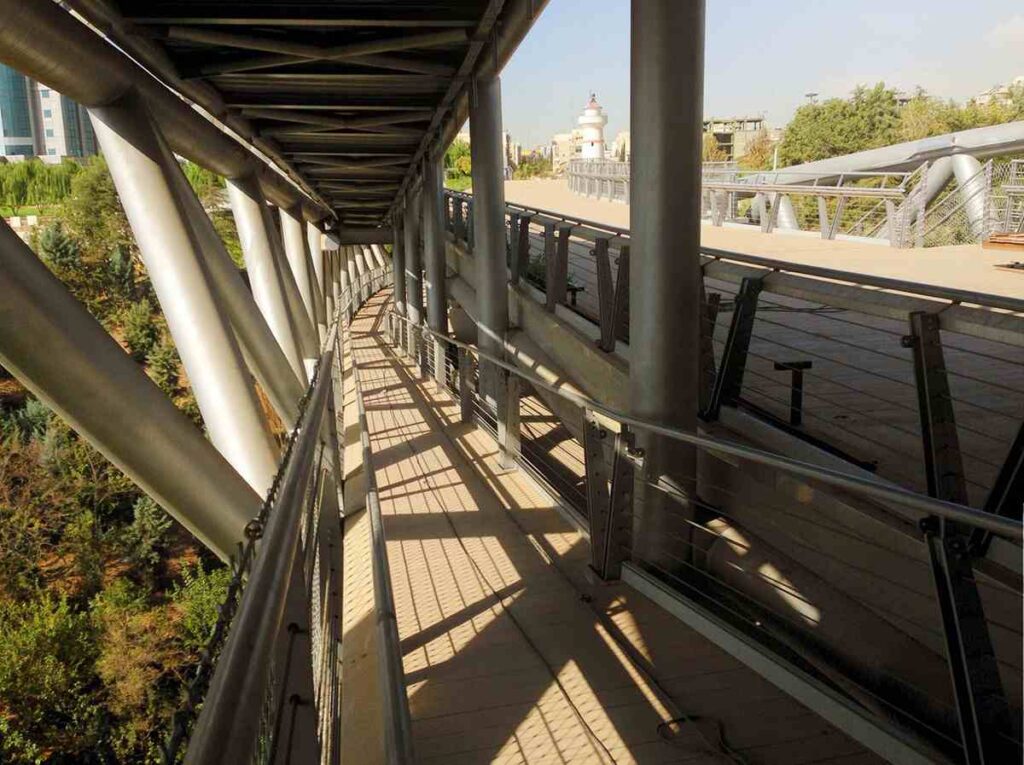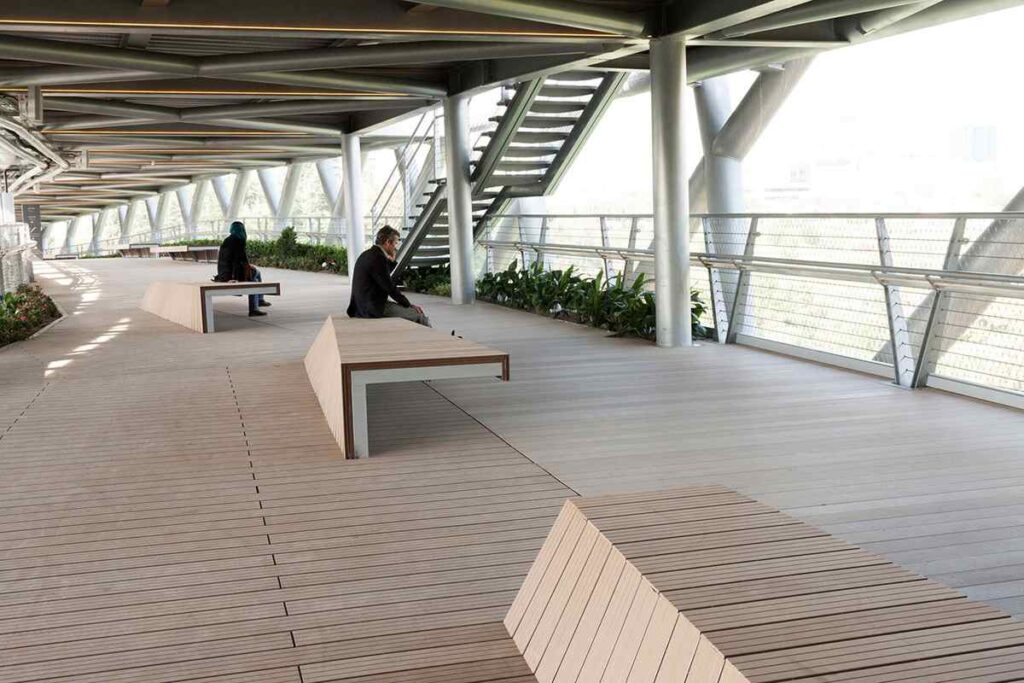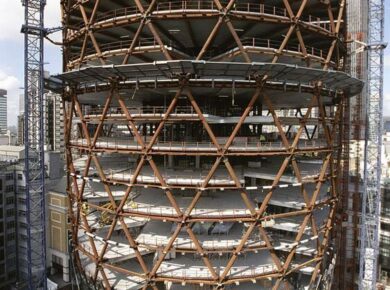Leila Araghian is an Iranian architect (born 1938). She has a Master degree of Architecture from the University of British Columbia. She previously studied architecture in Iran, at Shahid Beheshti University.
In 2005, Araghian co-founded Diba Tensile Architecture, a company specializing in the design, manufacture and installation of membrane structures. She was chief architect and designer of the Tabiat Bridge in Tehran, a pedestrian bridge opened in late 2014 which has won several prizes, including 2016 Aga Khan Award for Architecture.
Tabiat (‘Nature’) Bridge

Photo: Diba Tensile Architecture
The Tabi’at Bridge is the largest pedestrian overpass in Tehran, Iran. The 270-metre bridge connects two public parks by spanning one of the main highways in northern Tehran.
Construction of the bridge started in 2010, using a total of 2000 T of steel and 10.000 m³ of concrete before it was finished in October 2014.

Photo: © Mohammad Hassan Ettefagh
Three tree-shaped columns support two continuous deck levels which makes the lower level covered and suitable for use in all seasons. A third level is located where the truss meets the column branches.

Photo: © Sina Ahmadi
The complex steel structure has a dynamic three-dimensional truss and the surface is curved with a varying width. Structural elements of the bridge use a latent geometrical order rotated and repeated in all three dimensions.

Photo: © Mohammad Hassan Ettefagh
The result is a spatial structure large enough to create an inhabitable architectural space, where people congregate, eat and rest rather than just pass through. Multiple paths in each park were created that would lead people on to the bridge.

Photo: Diba Tensile Architecture
Seating, green spaces and kiosks encourage people to linger on a site where greenery has been preserved by the minimal footprint of the bridge, whose curve offers a variety of viewing perspectives.
About the Author:

Bruno Dursin – Managing Director at Believe in Steel. Bruno has more than 30 years of experience in promoting steel & steel solutions. His clients benefit from his extensive network within the building industry.



